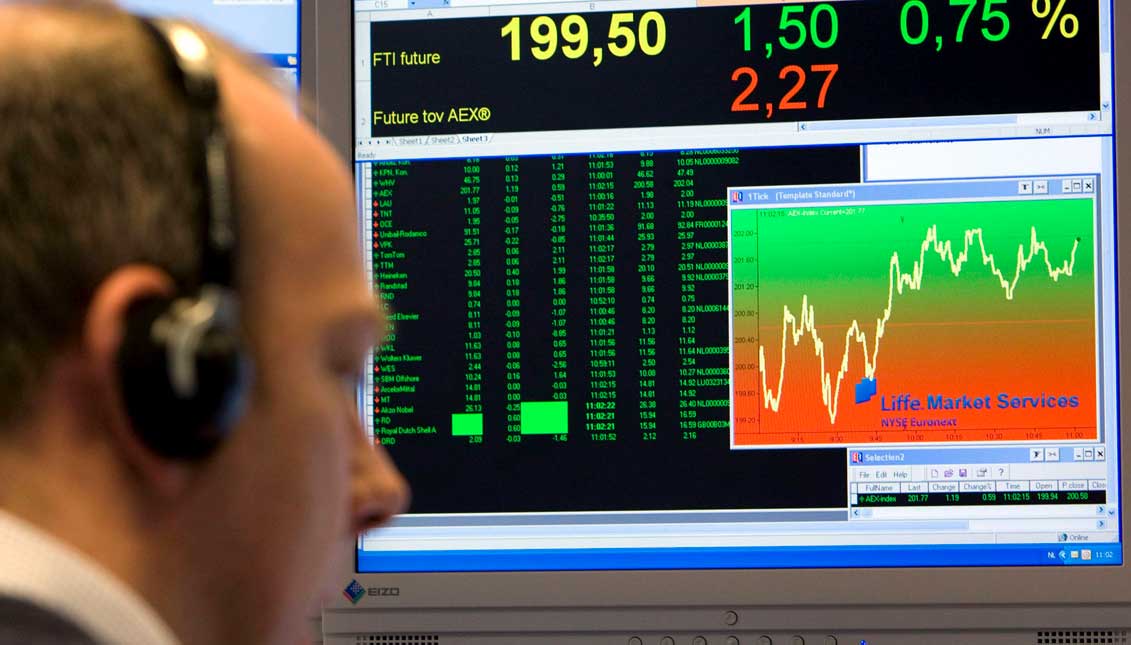
[OP-ED]: Is the stock market crazy -- or just giddy?
MORE IN THIS SECTION
“Warning Signs Mount as Stocks Stumble,” The Wall Street Journal headlined earlier this week. “Investors are running out of reasons to keep buying U.S. stocks, exposing a growing number of warning signs,” the Journal wrote. The most commonly cited are high P/E ratios, meaning the relationship between stocks’ prices (the P) and their profits or earnings (the E). A June survey of investment managers by Bank of America Merrill Lynch found that 84 percent felt U.S. stocks are overvalued.
Going back to 1936, the average P/E for the reported earnings of the Standard & Poor’s 500 stocks has been about 17, notes Howard Silverblatt of S&P. Recently, the P/E has been about 24. Some tech companies have especially high P/Es.
Not so fast, says Cline in a short paper for the Peterson Institute, the Washington think tank where he works. Statistical comparisons with the past, he argues, suggest the conventional wisdom is wrong. “Low inflation, low unemployment and low interest rates [create] considerable justification for the relatively high price-earnings ratios,” he writes.
The stakes in this dispute are substantial. A weakening stock market could hurt the “real economy” of production and jobs, as consumers feel less confident and spend less. A falling market would also compound the woes of President Trump, who has viewed climbing stocks as evidence that support for his policies is greater than media coverage indicates.
Even Cline says the market’s advance has been “robust.” From year-end 2011 to year-end 2016, the Standard & Poor’s (S&P) index of 500 stocks rose an impressive 78 percent. Still, he notes, the gain is much less than the increase in a similar five-year period that led to the dot-com bubble. From year-end 1994 to year-end 1999, the S&P rose 220 percent.
From 2002 to 2012, Cline says, stocks mostly followed profits upward. This is relatively uncontroversial. Fundamentally, stocks are supposed to reflect companies’ present and expected future profits. But since 2012, stock prices have increased faster than profits, raising questions about whether the market is riding an unsustainable speculative wave.
RELATED CONTENT
One explanation, according to Cline, is optimism about future profits. He cites forecasts by investment analysts that profits will grow rapidly in the next few years, up 37 percent in 2018 from 2016 levels. The more investors believe upbeat expectations, the more they can justify today’s high stock prices.
Cline relies heavily on a statistical model that attributes stocks’ P/E ratios to three factors: the unemployment rate; the inflation rate; and interest rates as measured by the rate on 10-year Treasury notes. There’s a logic behind each. Low unemployment signifies strong profitability -- good for stocks -- while higher jobless rate favors the opposite. Higher inflation fosters uncertainty and weaker profits. Higher interest rates draw money from stocks into bonds and certificates of deposit.
Cline likes the results. “During the past five years,” he writes, “the predicted P/E ratio has been relatively close to the actual level.”
All in all, he reasons that stocks aren’t trading far outside of what historical experience would suggest. The takeaway, if true, is that markets are acting mostly rationally and aren’t driven by speculation. Stocks are simply more attractive than most alternatives today.
But even Cline’s calculus rests on optimistic assumptions -- strong gains in profits, muted inflation, and low unemployment and interest rates. Any of these favorable conditions could reverse.
Rising interest rates are the most obvious vulnerability. Indeed, the Federal Reserve is nudging rates higher to pre-empt worsening inflation and financial speculation. It’s also possible that the turmoil of the Trump administration could spill into financial markets, as investors conclude that many of the president’s proposals, including so-called tax reform, stand a scant chance of passage.
So: The stock market may not be crazy, but it’s certainly giddy.







LEAVE A COMMENT:
Join the discussion! Leave a comment.